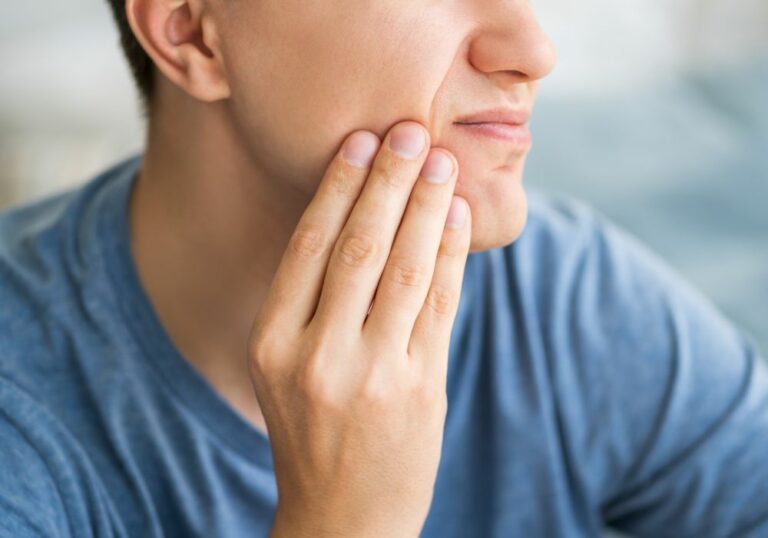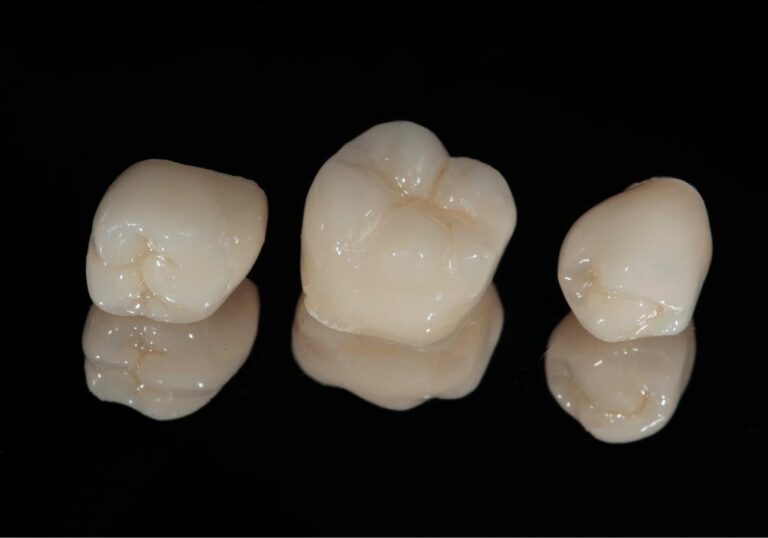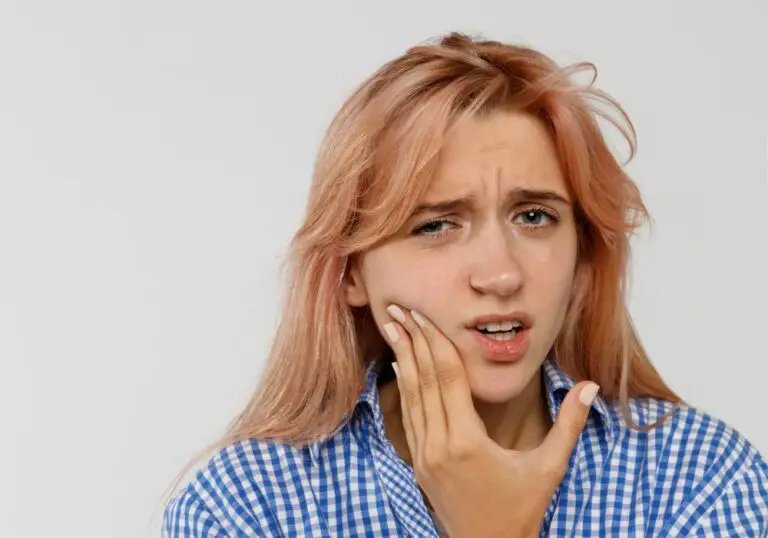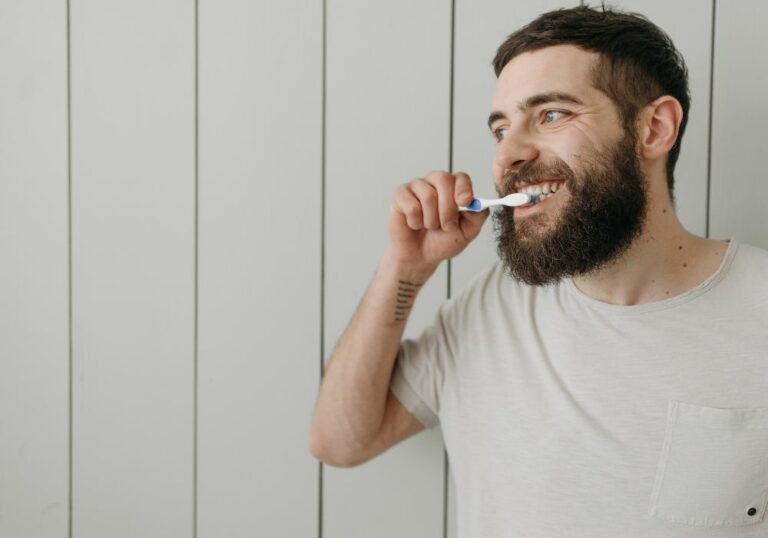Sparkling white teeth are often considered an attractive trait and a sign of good oral hygiene. While some people naturally have pearly white teeth, most people’s teeth shade falls somewhere on a broad spectrum from light yellow to dark brown. Teeth gain their color from two sources: intrinsic and extrinsic staining. Intrinsic staining occurs as enamel thins with age and the yellow-hued dentin layer underneath shows through. Extrinsic stains are external discolorations that accumulate on the tooth surface from food, drinks, tobacco, medications, and poor oral hygiene.
While professional teeth whitening procedures done in a dental office can provide dramatic whitening with long-lasting results, these treatments can be quite expensive and time consuming. For those seeking a temporary brightness boost on a budget, painting whitening products directly onto teeth at home may provide some aesthetic benefit. But how safe and effective is attempting to paint your teeth white? This comprehensive guide will examine the practice in detail, including:
- An overview of methods and products for temporarily painting teeth white at home
- Evaluating the effectiveness and longevity of painted on teeth whitening
- Safety considerations and potential side effects
- Professional vs. painted on whitening comparison
- Step-by-step instructions for application
- Additional frequently asked questions
By the end, you’ll have a complete understanding of what painting teeth whitening can realistically achieve, along with tips for safe usage.
Overview of Methods for Temporarily Painting Teeth White
Painting teeth white refers to applying whitening products directly to the tooth surface. Unlike professional whitening where custom-fitted trays are used to hold the bleaching gel against the teeth, painted on products contact only the front surface. Common over-the-counter methods and products for whitening teeth by painting them include:
Whitening Strips
Whitening strips for the teeth consist of thin, flexible plastic strips coated with a peroxide-based whitening gel. Popular brands include Crest Whitestrips and Smile Sciences. The strips mold across the front teeth, held in place through adhesion and tension rather than wrapping around the teeth like trays.
To use whitening strips, the strips are applied to the upper and lower teeth for 30 minutes to 1 hour daily depending on product. During this time, the hydrogen peroxide or carbamide peroxide gel reacts with organic stains, lightening their appearance through oxidation.
Whitening strips are considered the most effective painting on method, capable of lightening teeth up to 7 shades with 2 weeks of consistent use.
Whitening Pens and Paint-On Gels
Whitening pens feature a brush applicator to precisely paint whitening gel onto the teeth. Brands like Smileactives provide pens for on the go touch ups. The pens often contain similar hydrogen peroxide or carbamide peroxide formulations as strips, but in a more convenient applicator.
Some kits also come with syringes for painting whitening gel directly onto tooth surfaces with the provided applicator tip. This allows flexibility in where the gel is applied.
Whitening pens and gels typically produce less dramatic whitening than strips, with the ability to lighten teeth 1-2 shades with regular use. However, the precision applicator allows whitening just certain areas or spots as needed.
Charcoal Toothpastes and Powders
Activated charcoal has become a popular ingredient in oral care products like toothpastes, powders, and strips claiming to naturally whiten teeth. Manufacturers assert charcoal’s highly porous structure absorbs surface stains.
Charcoal whitening products often use ingredients like bentonite clay as an abrasive to scrub stains away. But charcoal itself does not actually bleach teeth. Rather than coating the surface like strips, charcoal products are brushed onto teeth and rinsed off after a few minutes.
While charcoal may remove some superficial stains through abrasive scrubbing, there’s little evidence it can meaningfully alter tooth shade. Yet the gritty texture risks damaging enamel with overuse.
Non-Peroxide Gels and Rinses
Some over the counter gels and rinses claim to whiten teeth without bleach using alternative ingredients and technology. For example, Optic White Express White toothpaste contains a patented formula using high-clean silica for stain removal and sodium hexametaphosphate to break up calcified deposits. However, reviews suggest these bleach-free gels produce minimal whitening compared to peroxide products.
Evaluating the Effectiveness of Painted On Whitening Methods
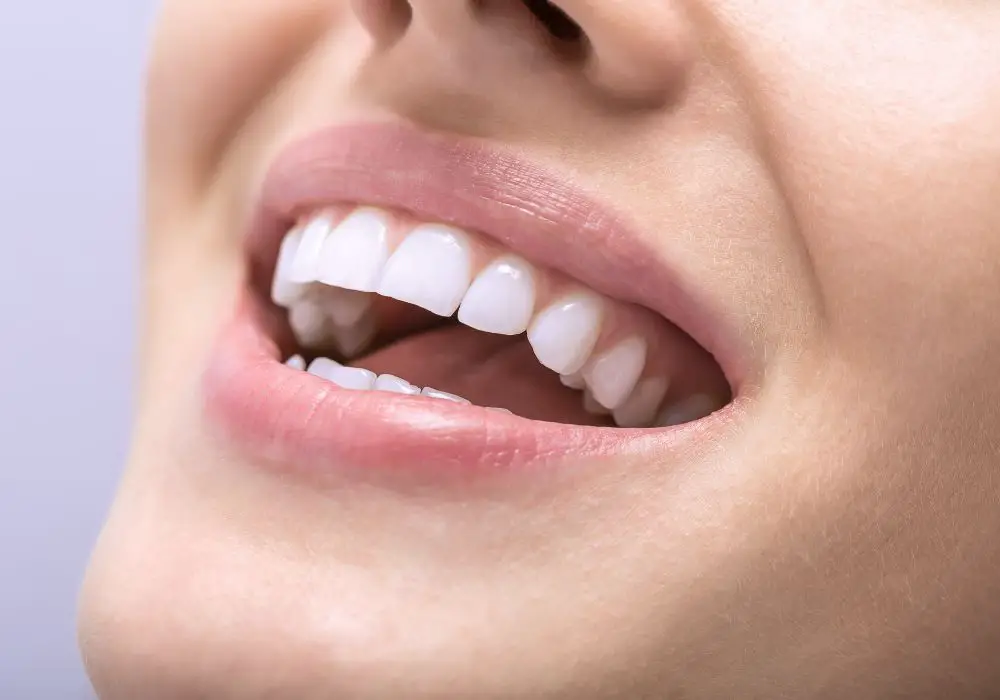
How well do the various methods of painting on whitening products actually work? Overall, at home painting produces more subtle, temporary effects compared to professional whitening. However, effectiveness can vary based on the specific technique and how consistently it’s applied over the treatment duration.
Efficacy of Whitening Strips
Clinical studies consistently demonstrate whitening strips produce the most significant results of over the counter methods. With diligent daily use, whitening strips can brighten teeth up to 7 shades over a 1-2 week period. In a 12-day study of Crest Whitestrips, participants’ teeth lightened by 6 shades on average. Results are often noticeable in as little as 3 days of use.
Whitening strips only treat the front surface of teeth. But when used properly they can deliver substantial whitening due to the longer contact time and higher peroxide concentration compared to other paint-on techniques. Consistent application is key though, as skipping days reduces overall effectiveness.
Efficacy of Whitening Pens and Gels
Whitening pens generally produce less dramatic whitening than strips, but allow precision targeting of specific stained areas. Using whitening pens daily can lighten teeth up to 2 shades over a 1 week period. Results may be observed in as little as 1-2 days. The overall color change largely depends on the intensity of stains and how diligently the pen or gel is applied. Less significant improvement is expected for more severely discolored teeth.
For minimal stains, alternating use of whitening strips for overall lightening with occasional pen spot treatments can be an effective strategy. Whitening gels paired with custom trays yield better efficacy closer to strips.
Efficacy of Charcoal Pastes and Powders
There is minimal evidence confirming charcoal toothpastes or powders drastically whiten teeth. While they may reduce yellow surface stains to a degree by abrasive scrubbing, activated charcoal cannot bleach intrinsic discoloration within the tooth. Studies found charcoal powder lightened teeth only 0.5 shade on average, similar to ordinary toothpaste. Any temporary stain removal is unlikely to be noticeable.
Potentially, charcoal may enhance other whiteners slightly. But its grittiness risks damaging enamel with overuse. Relying on harsh abrasives alone is not an effective or safe strategy for whitening stained teeth.
Efficacy of Non-Peroxide Paint-On Gels
The limited data available indicates paint-on gels without carbamide or hydrogen peroxide produce negligible whitening compared to products with these active ingredients. Optic White paint-on gel showed only 1 shade of lightening over 3 weeks of daily use in studies. User reviews generally report minimal to no visible improvement in tooth shade. This demonstrates peroxide is critical to meaningfully brighten teeth beyond just surface stain removal.
How Long Does Painted On Teeth Whitening Last?
One downside of painting products onto teeth for whitening is results are temporary and not permanent. Without repeating applications, teeth will gradually revert back to their original shade.
- Whitening strips/pens – Typically last 6 months to 1 year
- Charcoal pastes – Only a few days of stain removal at most
Why does painted on whitening fade? The hydrogen peroxide in strips and pens can only bleach the outer enamel layer of the tooth. Underneath the enamel is softer dentin tissue which is naturally a yellowish hue. As we age, enamel thins and more of the yellow dentin shows through causing gradual darkening. Whitening products cannot alter the innate color of dentin.
The outer enamel layer is also porous, so it naturally absorbs stains again over time from food, drinks, smoking, etc. Professional whitening better penetrates the tooth structure for more permanent color change. But painted on products have limited contact and cannot deeply bleach intrinsic stains.
Safety Precautions for Painting Your Teeth White
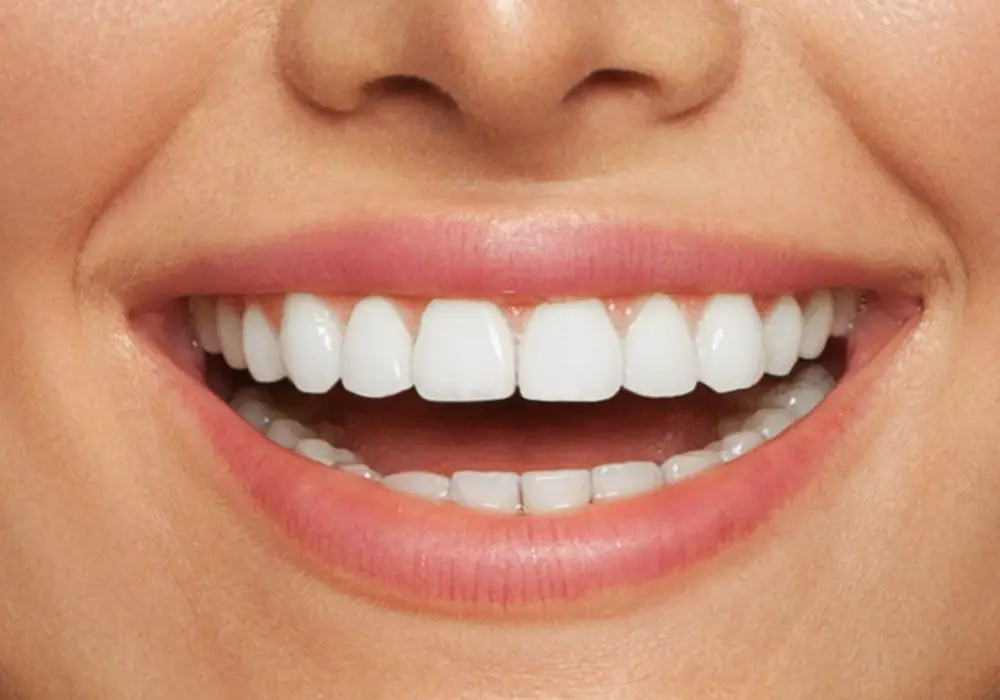
Paint-on whitening treatments are generally safe when following product instructions carefully and not overusing them. However, some users experience side effects like:
Tooth Sensitivity
Mild to moderate tooth sensitivity is the most common side effect of peroxide-based whitening strips or pens, experienced by around 50% of users. Sensitivity arises due to temporary dehydration of the teeth caused by the active ingredients. The discomfort usually subsides within 1-4 days of stopping use.
Those already prone to sensitive teeth are at higher risk. Using a desensitizing toothpaste or gel before whitening can help. If sensitivity is severe, consider switching to a lower peroxide concentration product.
Gum Irritation
If whitening gel comes in contact with gums, it can cause temporary inflammation and irritation. Improper application allowing the gel to sit on the gums prolongs this irritation. Carefully applying strips or gel only to the teeth surface minimizes exposure to gums.
Damage to Enamel
Frequent use of peroxide whitening strips and gels may weaken tooth enamel over time. The abrasiveness of some charcoal powders also wears away enamel. Limiting whitening sessions to the recommended duration and frequency reduces this risk. Rinsing thoroughly after charcoal products prevents prolonged enamel contact.
Seeing your dentist for a check-up before whitening is wise to identify any pre-existing conditions that may make whitening inadvisable or require precautions. For example, whitening is not recommended if you have:
- Untreated cavities or exposed roots
- Gum disease
- Extensive restorations like crowns or veneers
- Leaking fillings
Always carefully follow the usage instructions for any whitening product, as misuse heightens side effects. Moderation is key. While tempting, using strips or gels longer than directed does not improve results and jeopardizes safety.
Professional Whitening vs Painting Teeth White
Professionally administered teeth whitening yields superior whitening results compared to over the counter painted on options. But in-office or dentist-prescribed whitening also comes with a higher price tag. Considering the pros and cons of both methods can help determine if painted on whitening may serve your needs and budget or if investing in professional whitening is worthwhile.
Professional Whitening Overview
Professionally supervised teeth whitening involves using higher concentration whitening gels, often with light or laser activation for accelerated bleaching. Custom fitted trays are uniquely molded for your teeth to hold the gel against all surfaces, not just the front. Dramatic color improvement of 8-10+ shades is possible with in-office power bleaching.
At home dentist-dispensed kits using 15-22% carbamide peroxide or hydrogen peroxide allow controlled whitening over 1-2 weeks with less sensitivity. Professional whitening achieves longer lasting whitening for 2-5 years or more compared to 6 months to 1 year with painting methods.
Painted On Whitening Overview
Painted on whitening encompasses over the counter products like whitening strips, pens, pastes, rinses, or gels applied by the user at home. Lower concentrations of peroxide around 3-10% only lighten the outer enamel. 1 to 7 shades of whitening may be seen with diligent 2 week usage, but results fade within a year.
More affordable than professional treatment, painted on kits cost between $20-$60. While some sensitivity or gum irritation is possible, self application avoids risks of misuse that accompany professionally dispensed take home trays.
Key Comparison Points
| Professional Whitening | Painting Teeth White |
|---|---|
| Uses 10-35% hydrogen peroxide | 3-10% hydrogen peroxide concentration |
| Custom trays better fit teeth | Strips only adhere to front surface |
| Dramatic 8-10+ shade lightening | 1-7 shades lighter |
| Results last 2-5 years | Fades after 6-12 months |
| In-office power bleaching faster | Daily use for 1-2 weeks |
| Costs $300-$1500 | Only $20-$60 |
| Risk of misuse with take home trays | Self application may have less risks |
In summary, professional whitening works faster and lasts longer but is costlier. Painted on whitening affords a short-term brightness boost more affordably. Lighting beyond a few shades requires professional treatment.
Step-By-Step Guide to Painting Your Teeth White
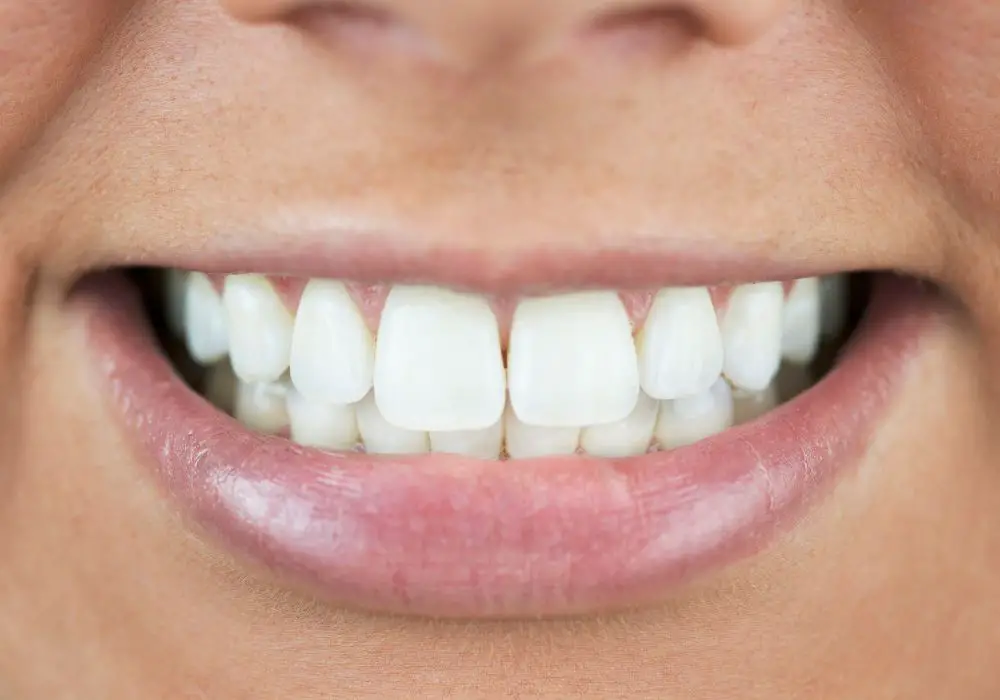
If you decide painting products onto your teeth is worth a try, follow these tips for proper technique and usage:
1. Brush and Floss First
Always thoroughly brush and floss before applying any whitening product. This prevents trapping food particles against teeth which could interact with the whitener.
2. Dry Teeth
Completely dry teeth with a clean towel or dryer on the cool setting. Paint on products adhere much better to dry teeth. Avoid whitening right after brushing or drinking.
3. Read All Instructions
Carefully read all usage and safety instructions before applying any whitener. Follow directions for amount, application technique, and duration.
4. Apply the Product Correctly
For strips, press firmly to fit the contours of teeth and smooth out bubbles or wrinkles. Completely coat teeth with gel using the brush tip with pens. With pastes, use a finger to spread evenly over front 6 teeth.
5. Leave on for Required Time
Let the product remain on the teeth undisturbed for the full time listed, usually 30-60 minutes. Timing ensures adequate contact for whitening. Resist talking or drinking during this time.
6. Rinse Thoroughly
After whitening, rinse your mouth well with water to remove all gel residue. This prevents prolonged contact which can increase sensitivity or gum irritation.
7. Brush Teeth
Finally, brush your teeth to remove any remaining whitener from the teeth. Avoid acidic or staining foods/drinks for an hour after whitening.
8. Repeat as Needed
Follow manufacturer’s guidelines for frequency of use. Typically strips or pens are used once daily while pastes limit to 1-3 times per week.
Additional Frequently Asked Questions
How long does painted on teeth whitening last?
The effects of painted on whitening like strips, pens, or pastes lasts approximately 6 months to 1 year. Without repeating application, teeth will gradually return to their original shade. Professional whitening is required for longevity beyond 1 year.
Can charcoal whitening products damage enamel?
Yes, frequent use of highly abrasive charcoal powders could potentially damage tooth enamel over time. Charcoal itself does not bleach, so relying on abrasiveness to lift stains is not an effective or ideal method, though limited use may remove surface stains.
Is it safe to use whitening strips every day?
The manufacturers of whitening strip products typically recommend daily use for 1-2 weeks for full results, and warn against exceedling 4 weeks of use. Going beyond the recommended use can increase side effects like sensitivity without improving whitening, so moderation is key.
Why do my teeth hurt after using whitening strips?
Mild to moderate tooth sensitivity is a common side effect experienced by around half of whitening strip users. Sensitivity results from temporary dehydration of the teeth by the peroxide gel. Discomfort usually diminishes within 1-4 days after use stops. Using a desensitizing toothpaste can help.
Can I paint whiteners on crowns or veneers?
You should avoid applying hydrogen peroxide whiteners to crowns, veneers, fillings, or other restorations. The peroxide can deteriorate those materials over time. Your natural teeth may appear whiter in contrast.
Conclusion
Painting on whitening products like strips, gels, or pastes provides a more affordable and convenient option for temporarily brightening your smile a few shades compared to professional whitening. However, dramatic color change is unlikely with over the counter painting methods since they cannot effectively penetrate the deeper tooth layers. Mild sensitivity or gum irritation is also possible with peroxide products.
While charcoal powders claim to lift stains naturally, the evidence for whitening is lacking. Their abrasiveness also poses risks to enamel. For most noticeable whitening beyond just surface stain removal, hydrogen peroxide strips or pens used consistently for 1-2 weeks deliver the best home results. Just take care to follow directions and not overuse them.
For anyone seeking whiter teeth by several shades or more with longevity over a year, professional in-office or dentist-supervised take-home whitening remains the gold standard treatment. But for a temporary brightness boost on a budget, painting whitening onto discolored front teeth may help you smile more confidently.

